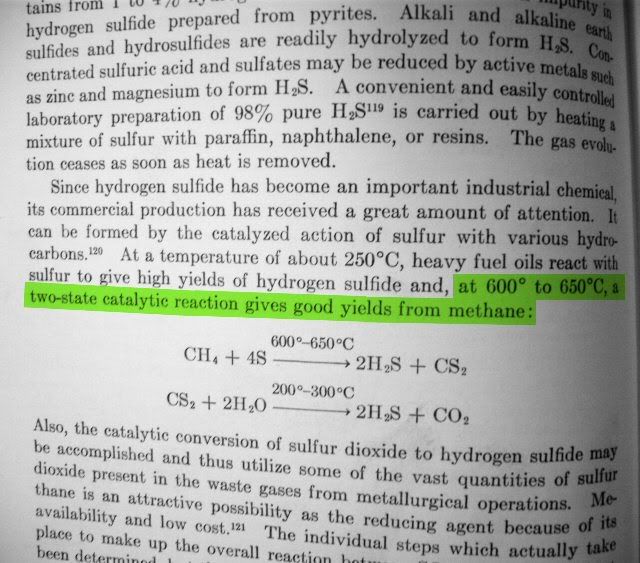In this Example a narrow stream of propane heated to 425.degree. C is injected countercurrent concentrically into a much wider stream of sulfur
preheated to 700.degree. C to react substantially adiabatically at a pressure of about 40 psig. The flow rates are so controlled that the amount of
sulfur is about 34% in excess of that required for the stoichiometric reaction with the propane to form carbon bisulfide. The reaction is effected in
a short reactor, the residence time therein being 0.61 second, and the reaction mixture is then immediately quenched, first in a vessel at 140.degree.
C (thereby condensing the sulfur in the reaction mixture). The non-condensed gases, including carbon bisulfide, then pass through a pressure-regulator
(set to provide a back pressure of 3.7 atmospheres, i.e., 40 psig) from which the gases are passed to a condenser at 0.degree. C and under pressure to
condense carbon bisulfide; non-condensed gases are vented at atmospheric pressure. The propane is injected through a 0.318 cm diameter circular
orifice into the stream of sulfur flowing in a circular pipe having an internal diameter of 2.09 cm.
The calculated mixing temperature is about 675.degree. C.
The propane is converted substantially quantitatively (over 99%) and analysis of the condensed carbon bisulfide indicates that it has a purity of
99.89%, about 0.02% of benzene, about 0.09% of thiophene and no toluene. The condensed sulfur contains only traces of carbonaceous material.
|






